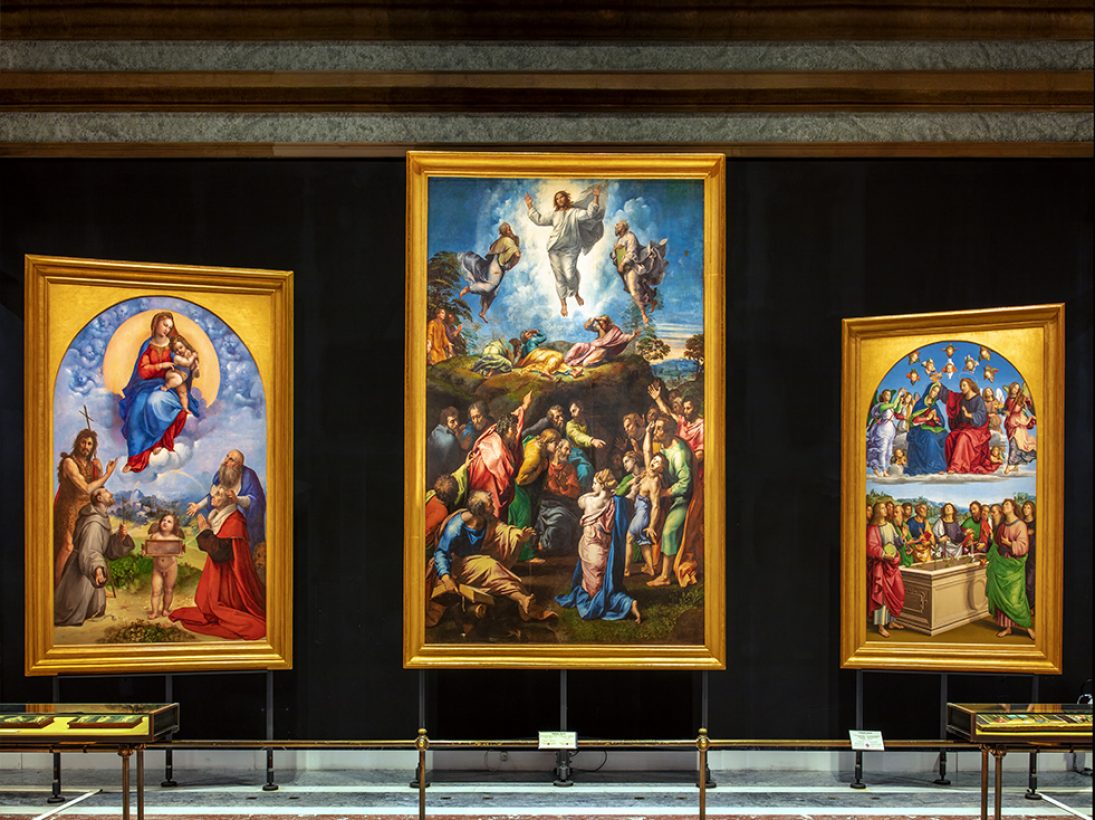The Pinacoteca Vaticana, or Vatican Picture Gallery, is one of the most esteemed art galleries in the world, located within the Vatican Museums in Vatican City. Established to house the extensive collection of paintings and artworks amassed by the Popes over centuries, the Pinacoteca Vaticana offers visitors a journey through the history of Western art, from the Middle Ages to the 19th century.
Nestled within the vast treasure trove of the Vatican Museums lies a haven for art enthusiasts – the Pinacoteca Vaticana. This stunning collection of paintings isn’t just another gallery; it’s a captivating journey through the evolution of Western European art, showcasing masterpieces by some of the greatest artists who ever lived.
Pinacoteca Vaticana Historical Background

The idea of creating a dedicated gallery for the Vatican’s extensive collection of paintings was conceived in the early 19th century. Pope Pius VI began assembling a collection of important paintings, which was significantly expanded by his successors. The gallery was formally established in 1932 by Pope Pius XI, who commissioned architect Luca Beltrami to design the building specifically to house the collection.
Pinacoteca Vaticana Architectural Design
The Pinacoteca Vaticana is housed in a neoclassical building situated in the Vatican Gardens. The structure comprises several rooms and galleries, each designed to provide optimal viewing conditions for the artworks. The natural light filtering through the large windows enhances the viewing experience, allowing the details and colors of the masterpieces to be appreciated fully.
Pinacoteca Vaticana Collection Highlights

The Pinacoteca Vaticana contains over 460 paintings and numerous other works of art, including tapestries and icons. The collection spans several centuries and includes works by some of the greatest artists in history.
Imagine wandering through halls adorned with iconic works by Renaissance masters like Raphael, Caravaggio, and Leonardo da Vinci. The Pinacoteca Vaticana boasts an impressive collection, spanning centuries and artistic styles. From the ethereal beauty of Giotto’s frescoes to the dramatic realism of Caravaggio’s paintings, the gallery offers a glimpse into the artistic genius of these bygone eras.
Medieval and Renaissance Art
- Giotto di Bondone: The collection includes Giotto’s “Stefaneschi Triptych,” a masterpiece of Gothic art that showcases his revolutionary use of space and emotion.
- Fra Angelico: His “The Entombment of Christ” exemplifies the delicate and spiritual nature of early Renaissance painting.
High Renaissance Masterpieces
- Raphael: The gallery houses several works by Raphael, including the “Transfiguration,” considered one of his greatest masterpieces. This painting reflects the artist’s exceptional skill in composition, color, and expression.
- Leonardo da Vinci: Although Leonardo’s presence in the Pinacoteca is limited, his “St. Jerome in the Wilderness” is a notable inclusion, demonstrating his meticulous approach to anatomy and emotion.
Baroque Art
- Caravaggio: Caravaggio’s “Deposition from the Cross” is one of the highlights of the gallery. The dramatic use of light and shadow and the intense emotional realism are characteristic of his style.
- Guido Reni: Reni’s works, including “The Crucifixion of St. Peter,” exemplify the grace and clarity of Baroque religious painting.
18th and 19th Century Art
- Pietro da Cortona: His grand frescoes and paintings represent the Baroque era’s opulence and dynamism.
- Other notable artists: The collection also features works by artists such as Titian, Veronese, and Perugino, each contributing to the rich tapestry of art history represented in the Pinacoteca.
Educational and Cultural Significance
The Pinacoteca Vaticana serves not only as a repository of invaluable art but also as an educational resource. It offers scholars, students, and art enthusiasts an opportunity to study and appreciate the development of Western art within the context of the Catholic Church’s patronage. The gallery’s arrangement allows visitors to trace the evolution of artistic styles and techniques, providing insight into the cultural and historical contexts in which these masterpieces were created.
The Pinacoteca Vaticana is a testament to the Vatican’s role as a custodian of human culture and artistic achievement. It stands as a treasure trove of artistic genius, reflecting the Church’s long-standing commitment to the arts and its recognition of the power of visual expression to inspire faith and human creativity. Visitors to the Pinacoteca Vaticana are treated to an unparalleled collection of artworks that encapsulate the beauty, history, and spiritual depth of Western art.
A Must-See for Art Lovers
A visit to the Pinacoteca Vaticana is a must for any art enthusiast venturing into the Vatican Museums. It’s a chance to witness the evolution of artistic styles, marvel at the technical mastery of the old masters, and experience the enduring power of art.
Planning Your Visit
The Pinacoteca Vaticana is part of the Vatican Museums, so consider purchasing a combination ticket for access to the entire complex. Be prepared for crowds, especially during peak season. Guided tours are available and can offer valuable insights into the artworks and the history of the collection.
A Treasure Trove of Artistic Legacy
The Pinacoteca Vaticana is more than just a gallery; it’s a testament to the artistic legacy of Western Europe. Exploring these halls allows you to connect with the creative minds of the past and appreciate the enduring beauty and power of art. So, next time you find yourself in Vatican City, don’t miss the chance to delve into the captivating world of the Pinacoteca Vaticana.
What’s your favorite artistic period? Share your thoughts in the comments below!








0 Comment